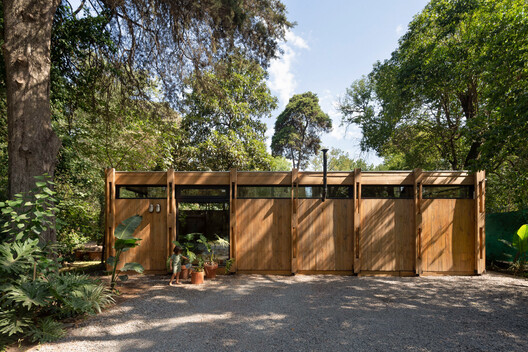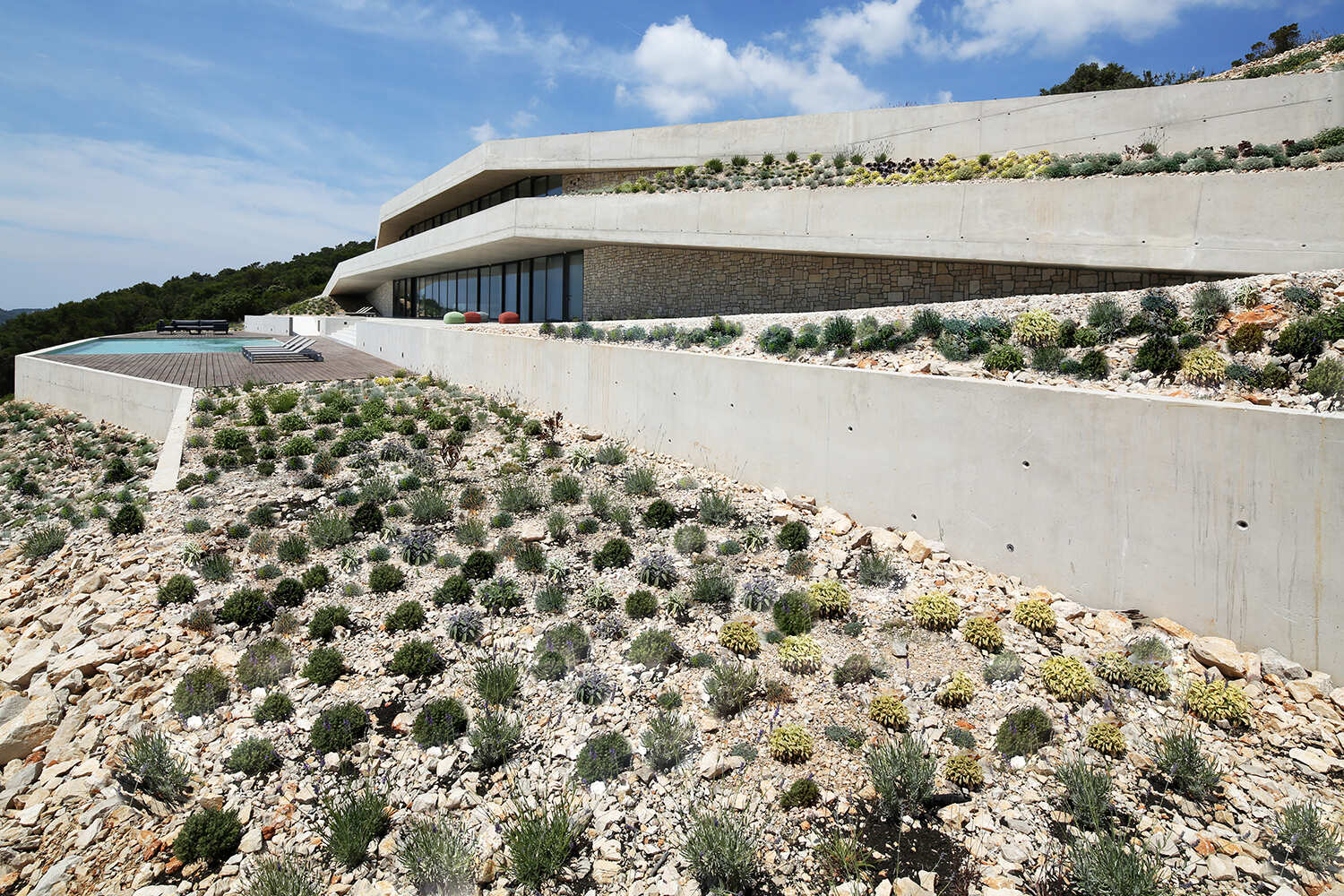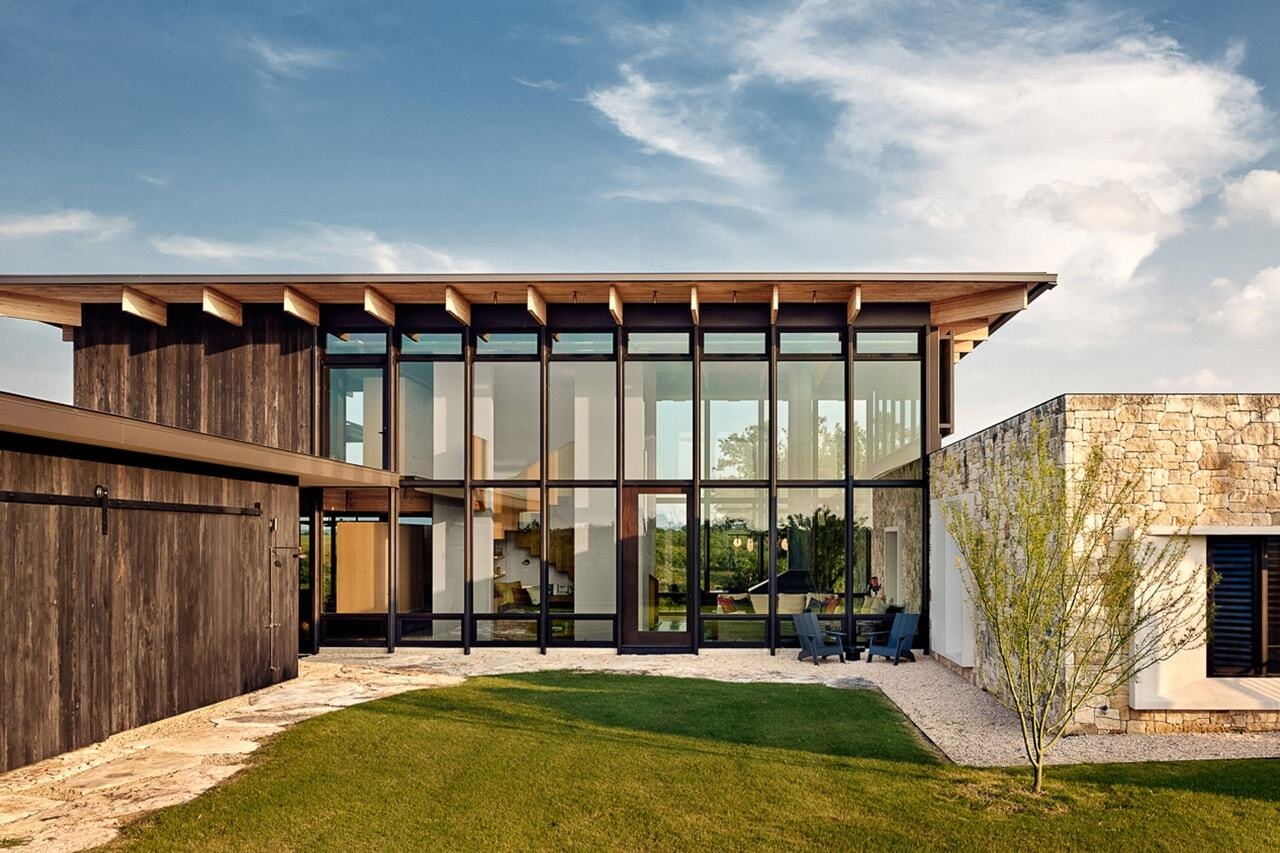Neil Dusheiko Architects extends Kent home with light-filled garden pavilion


London studio Neil Dusheiko Architects has extended a home in Kent, creating a minimalist glazed garden pavilion sheltered by a large timber-lined roof.
Named Pavilion Rest, the project extends a home originally built in the 1990s in the grounds of the Grade-II listed Pembroke Lodge, located within the Hildenborough Conservation Area in rural Kent.

This context necessitated a sensitive approach, and rather than make extensive changes to the home's existing layout, Neil Dusheiko Architects opted for a "single gesture of transformation," in the form of a glazed pavilion that better connects the home to its garden.
Informed by the minimal structures of California's 1960s Case Study Houses, this glazed pavilion is topped by a timber-lined roof with a thick black fascia, which extends to become a garden canopy perched on slender steel columns.

"Rather than dominate, the extension dissolves boundaries, bringing rhythm, warmth, and spatial generosity to what was a disjointed 1990s layout," founder Neil Dusheiko told Dezeen.
"The concept focused on a single gesture of transformation – resolving layout inefficiencies and supporting modern family life with simplicity, flexibility, and warmth."
"The new timber-lined pavilion acts as the social heart – an open, light-filled volume that anchors the layout and strengthens connection to the garden," he added.

The pavilion extends what was originally a living area at the southwestern corner of the home with a new single-storey living and dining area, set back from the front of the home to minimise its visual impact.
Adjacent to this space, the existing kitchen has been extended into the former dining space via the removal of an internal wall, creating a unified, L-shaped living, dining and kitchen area accessible directly off the home's main entrance hallway.
The materials of the extension were designed to complement but not imitate the existing building, with areas of exposed reclaimed brickwork alongside slatted timber screens that protect the outdoor seating areas from overlooking.
These materials are carried through into the interiors, where the brick walls have been left unlined and a slatted timber ceiling is carried through from the terrace canopy to above the dining area.

"Our challenge was to introduce a clearly contemporary intervention without disrupting the character of its historic setting," explained Dusheiko.
"Set low to the ground and screened with vertical oak fins, it respects neighbours and site lines while embracing its mature garden with open glazing and deep eaves," he added.
Upstairs, a series of minimal alterations were made to improve circulation between the original home's five bedrooms, alongside the introduction of an additional en-suite bathroom.

Previous residential projects by Neil Dusheiko Architects include the addition of a series of "spa-like" spaces clad in charred timber to a home in London and the conversion of a former showroom in Lancaster Gate into a light-filled home for its elderly owners.
The photography is by Jim Stephenson.
The post Neil Dusheiko Architects extends Kent home with light-filled garden pavilion appeared first on Dezeen.





















































